
6 wildflowers you can see in the Flinders Ranges this spring
Wildflowers are in full bloom in the Flinders, especially at Mt Remarkable. Look for these six on your next visit.
Wildflowers are blossoming in the Flinders Ranges, with recent rainfall and spring weather making now the perfect time to view the region’s most spectacular flowers.
If you head to Alligator Gorge in Mount Remarkable National Park, in the southern Flinders, you’ll see a huge range of spectacular blooms – thanks to recent rainfall of up to 77 millimetres at Mambray Creek campground in the heart of the park.
The downpour has meant many creeks and waterholes have switched from dry creek beds to flowing streams. It’s a beautiful part of South Australia and a sight not to be missed.
The park has 533 species of native plants, which includes populations of threatened orchids. Why not try to spot this selection on your next visit?
1. Common fringe lily
The common fringe lily is found in a variety of areas, from dry hillsides and open forest, to wetter heath and woodlands.
The mauve flowers have 3 broad fringed petals alternating with 3 narrower sepals, all 12 to 15 mm long.
Each flower only opens for one day, but the plants keep flowering over weeks.
The common fringe lily’s botanical name is Thysanotus tuberosus.

2. Fringe myrtle
You can find common fringe myrtle all across the Flinders Ranges at the moment, and you’ll know when you’ve found it when you spot a beautiful flower display ranging in colour from white to pink.
Fringe myrtle’s botanical name is Calytrix tetragona.
The calytrix part of the plant’s botanical name comes from the Greek word meaning calyx and hair, which represents the long fine hairs on the cup-like structure surrounding the base of the flower. Tetragonia is Greek for four-sided, which represents the plant’s four-sided leaves.
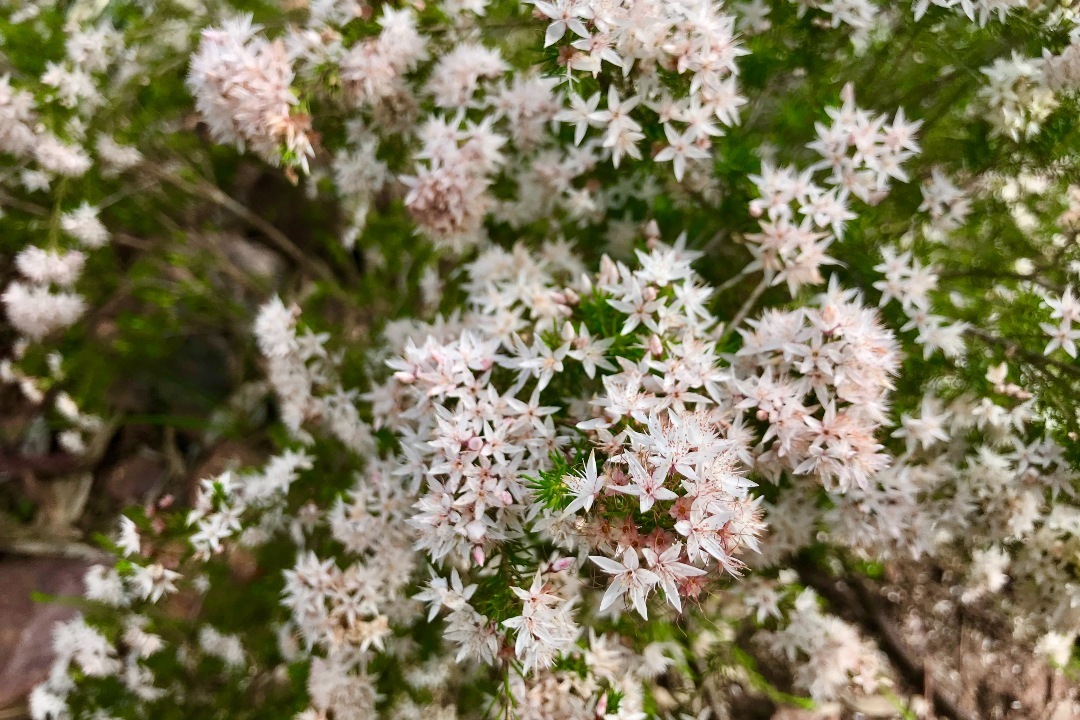
3. Guinea flower
This plant is found in the Flinders Ranges, on Kangaroo Island and in the South East, growing in sandy soils in heathland, heathy woodland and mallee. It’s also found in Queensland, New South Wales, Victoria and Tasmania.
The Guinea flower’s botanical name is Hibbertia scandens. Hibbertia is named after George Hibbert, a London merchant who maintained a private botanic garden at Chelsea.
Its bright yellow flowers can most commonly be seen between September and December.
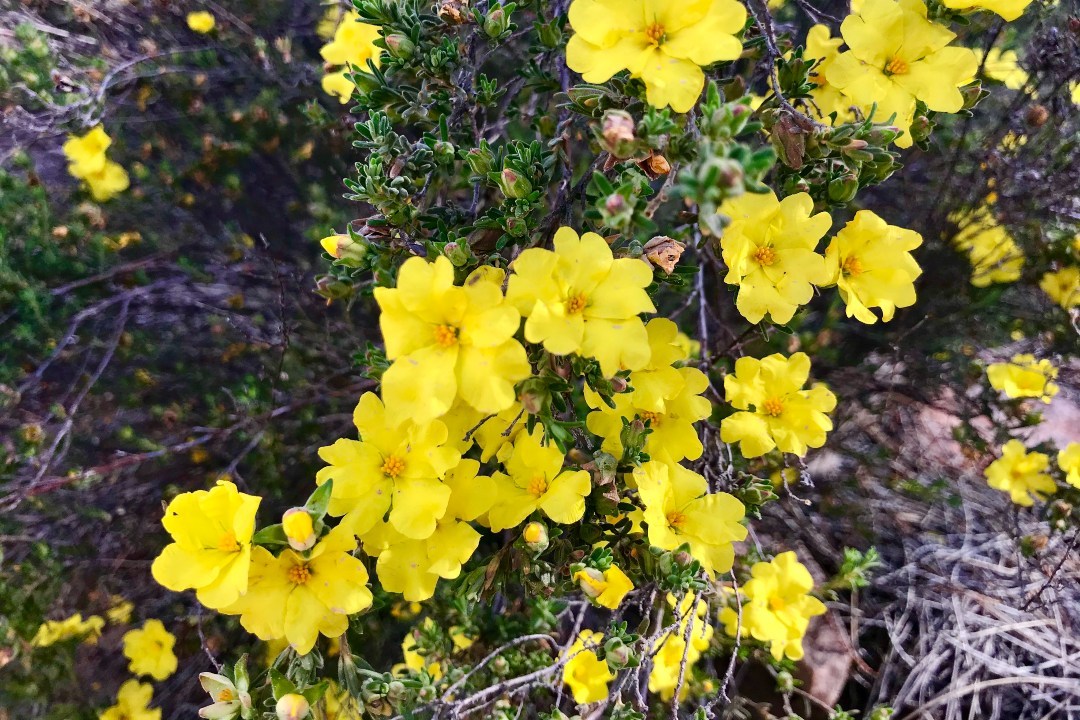
4. Lavender grevillea
Grevillea lavandulacea is a variable species with a number of distinct horticultural forms in cultivation, mostly known for their geographic origin.
It is a low spreading shrub to 0.3 metres high by 1 metre spread with brilliant pink to red ‘spider’ flowers.
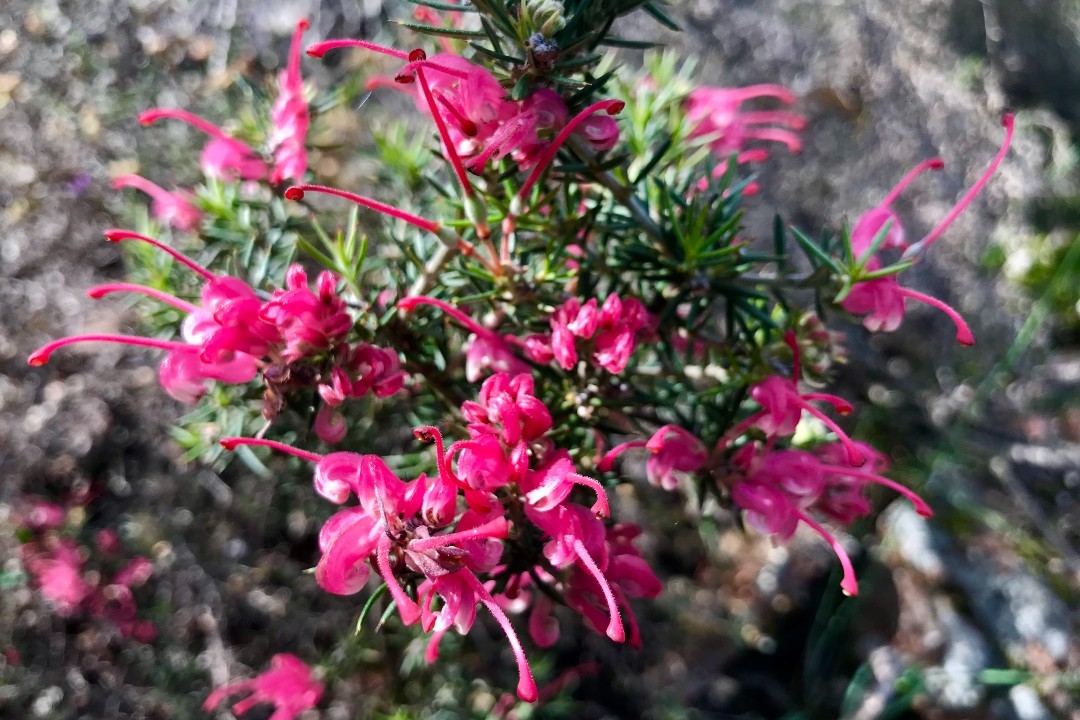
5. Mintbush
Mintbush, also known as Prostanthera ovalifolia, is a species of flowering plant that is endemic to the more arid areas of Australia. It’s an aromatic shrub and its leaves range from a narrow egg-shape to a narrow elliptic-shape, which are decorated with white flowers.
It can be found in arid areas of SA, as well as NSW, Qld, Western Australia and the Northern Territory, where it grows in woodland in rocky, dry terrain.
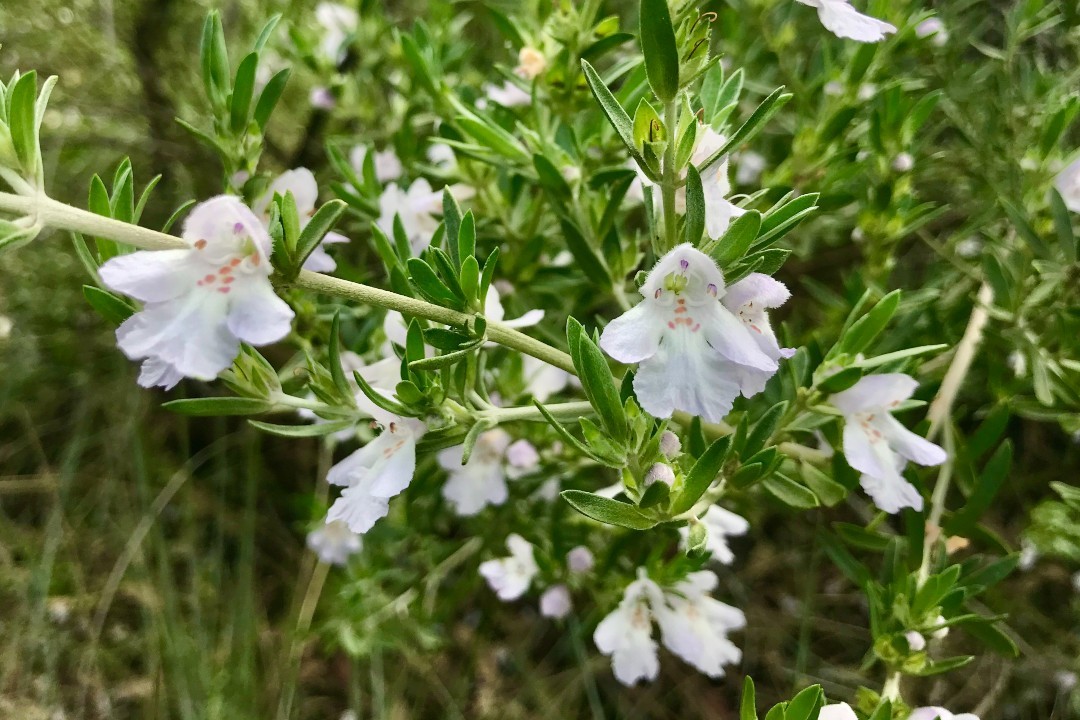
6. Nodding chocolate lily
Nodding chocolate lily, also known as Dichopogon fimbriatus, gets its name from its beautiful violet chocolate scented flowers. These, along with its tubers, can be eaten raw or cooked.
This species is found in grassland, woodland and forest regions of SA, as well as in NSW, Qld, WA, Tasmania and Victoria.
The plant’s edible tubers usually grow to about 3.5 cm in length, about 15 cm below the surface. Nodding chocolate lily is found in arid regions in sandy soils.
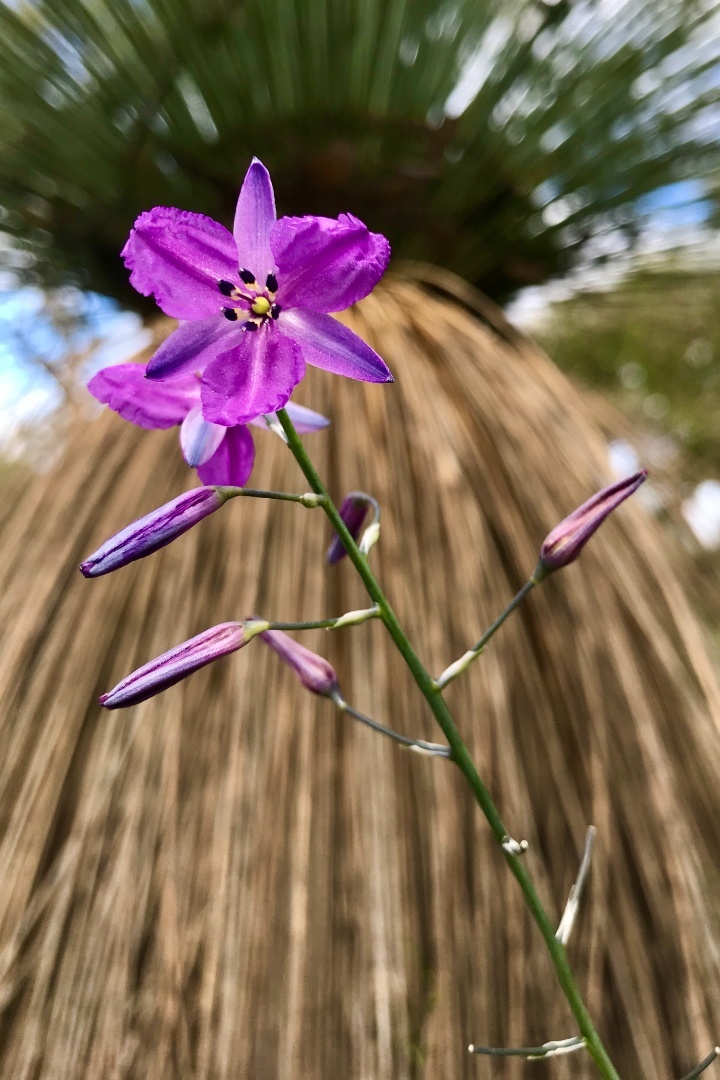
Love SA’s flora? Read our story to see what other regions have to offer:Where to find wildflowers in South Australia. You might also like to learn about our state’sstunning native orchids.